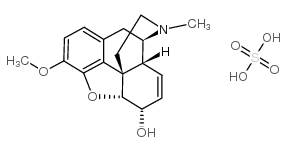Pharmacokinetics of opioids in liver disease.
I Tegeder, J Lötsch, G Geisslinger
文献索引:Clin. Pharmacokinet. 37 , 17-40, (1999)
全文:HTML全文
摘要
The liver is the major site of biotransformation for most opioids. Thus, the disposition of these drugs may be affected in patients with liver insufficiency. The major metabolic pathway for most opioids is oxidation. The exceptions are morphine and buprenorphine, which primarily undergo glucuronidation, and remifentanil, which is cleared by ester hydrolysis. Oxidation of opioids is reduced in patients with hepatic cirrhosis, resulting in decreased drug clearance [for pethidine (meperidine), dextropropoxyphene, pentazocine, tramadol and alfentanil] and/or increased oral bioavailability caused by a reduced first-pass metabolism (for pethidine, dextropropoxyphene, pentazocine and dihydrocodeine). Although glucuronidation is thought to be less affected in liver cirrhosis, and clearance of morphine was found to be decreased and oral bioavailability increased. The consequence of reduced drug metabolism is the risk of accumulation in the body, especially with repeated administration. Lower doses or longer administration intervals should be used to remedy this risk. Special risks are known for pethidine, with the potential for the accumulation of norpethidine, a metabolite that can cause seizures, and for dextropropoxyphene, for which several cases of hepatotoxicity have been reported. On the other hand, the analgesic activity of codeine and tilidine depends on transformation into the active metabolites, morphine and nortilidine, respectively. If metabolism is decreased in patients with chronic liver disease, the analgesic action of these drugs may be compromised. Finally, the disposition of a few opioids, such as fentanyl, sufentanil and remifentanil, appears to be unaffected in liver disease.
相关化合物
| 结构式 | 名称/CAS号 | 分子式 | 全部文献 |
|---|---|---|---|
 |
硫酸可待因
CAS:1420-53-7 |
C18H23NO7S |
|
Respiratory effects of opioid full and partial agonists in r...
1996-04-01 [J. Pharmacol. Exp. Ther. 277 , 462-472, (1996)] |
|
Biochemical effects of Catha edulis, cathine and cathinone o...
1993-08-01 [J. Ethnopharmacol. 39(3) , 213, (1993)] |
|
Discriminative stimulus properties of (+)cathine, an alkaloi...
1990-06-01 [Pharmacol. Biochem. Behav. 36(2) , 267, (1990)] |